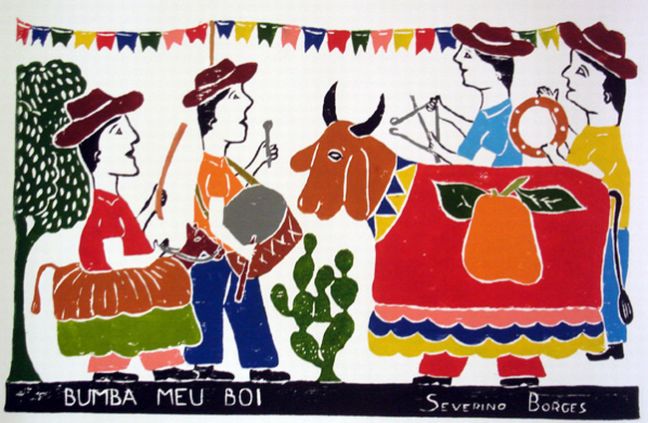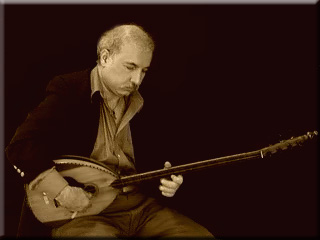Masters of Qânun
Qânun Playing in
Contemporary Period
2014
Tracks:
01. Dastgah-E Shur - Jalal Qanuni & Manuchehr Shirazi - 1:35
02. Avaz-E Dashti - Jalal Qanuni - 11:55
03. Interview with Jalal Qanuni - Jalal Qanuni - 9:53
04. Dastgah-E Segah - Jalal Qanuni - 3:22
05. Dastgah-E Homayoun - Jalal Qanuni - 6:24
06. Avaz-E Bayat-E Esfahan - Mehdi Meftah - 12:01
07. Dastgah-E Segah, Pt. 2 - Akbar Sodeyf - 3:32
08. Avaz-E Nayat-E Esfahan - Simin Aqarazi - 5:09
09. Avaz-E Shushtari - Simin Aqarazi - 3:08
10. Pishdaramad Bayat-E Esfahan - Simin Aqarazi - 2:38
11. Avaz-E Bayat-E Esfahan, Pt. 2 - Simin Aqarazi - 1:50
12. Dastgah-E Mahoor - Maliheh Saeedi - 4:51
13. Avaz Bayat-E Esfahan - Maliheh Saeedi - 3:52
14. Avaz Bayat-E Esfahan, Pt. 2 - Maliheh Saeedi - 1:39
♫☆`*♥¸¸.•*¨*•♫☆`*♥¸¸.•*¨*•☆♫
.ღ•:*´♥`*:•ღ.
♫☆`*♥¸¸.•*¨*•☆♫`*♥¸¸.•*¨*•☆♫
Compilation & Accompanying notes by
Malihe Saeidi
Qânun Introduction
Qânun is a right-trapezoid-shaped, plucked musical instrument. Materials used in the construction of qânun are wood, bone, gut, metal etc. Qânun belongs to the chordophone class of instruments, and since the strings are all played open—i.e. there are no frets and fingerings—a player has the possibility of plucking multiple strings at the same time.
In his book, Modâvemat Dar Osul-e Musiqi-ye Iran (Consistency in Iran’s music principals) (p. 103), Mehdi Forugh writes [Abd-ol-Qâder] Ebn-e Gheibi believes that it was Plato who invented qânun, while others consider it to be Fârâbi’s invention. The writer of Kanz-al-tohaf is the only person who extensively talks about qânun, mentioning that the depth of its box should be a little more than ten centimeters and it should be made out of grapevine wood […] the number of strings are 74, while Ebn-e Gheibi says it is 72 Although there are several theories and hypotheses about qânun’s origin and history, one thing is for sure: it goes way back. The oldest document about qânun and similar instruments are Assyrian carvings. Apparently, due to restrictions that were put on music, playing qânun was abandoned only after Timurid era, because towards the end of Timurid dynasty and in the early Safavid, there had been many well-known and celebrated players. In his book Badâye’ al-Vaqâye’, Zein-al-Din Mahmoud Vâsefi, 15th century scientist and musician, has referred to a number of renowned qânun players.
In works of Safavid era, there are two images showing a qânun player performing in paintings of Chehel-Sotun palace in Esfahan It was only c. 1892 that qânun returned to Iran by Rahim Qânuni who then had studied the instrument under great Arab masters of Basra, Baghdad, Syria and Egypt.
Malihe Sa'idi
Qanun Players
Rahim Qânuni (1905-1944), Shiraz, according to Hâshem Qânuni, son of Rahim (1875-1935), Shiraz. He learned music from his father. In the age of 16 or 17, he traveled to Basra, Baghdâd, Syria and Egypt to learn qânun and in a specific period he was the only player of the instrument in Iran. He had some pupils and traveled from Shiraz to Tehran a few times. Qânuni and Atâ'ollâh Zâhed performed a number of live programs in Radio Tehran.
Jalâl Qânuni (1900-1983), Shiraz, according to Nejât Qânuni, born 1906, Shiraz. He started learning the instrument from his father at the age of fifteen. He was considered to be the best player of the instrument after his father. He performed in Radio Tehran several times and a number of his recordings are still available.
Performances of Jalâl Qânuni on this compilation are made available to us by his son Nejât, to whom we express our gratitude.
Mehdi Meftâh (1911-1996), Tehran. Also a skillful violin player, he was the first writer/teacher of methodical playing of qânun in the National School of Music. His writings and recordings on teaching of violin and qânun are available. Meftâh's best-known students are Simin Âqârazi and Malihe Sa'idi.
Akbar Sodeyf (b. 1939), Tehran, started playing the flute at the age of fourteen. He spent two years at Mehdi Meftâh's open courses learning qânun and continued studying under Jalâl Qânuni. Sodeyf began his professional career with Radio Tehran's orchestras led by Abbâs Shâpuri, Homâyoun Khorram, Anushiravân Rohâni, among others. He moved to the United States to study and now lives in Texas.
Simin Âqârazi Dormani (1938-2009), Tehran, received her diploma from National School of Music, where her first instrument was violin and qânun her second. She was employed at the Ministry of Art and Culture. Simin had worked with various art groups. One solo performance of her has remained, which was recorded in the 1980's.
Malihe Sa'idi (b. 1948), Tehran. In addition to playing qânun, she is a researcher, teacher, composer and writer. She used to be the head teacher of girl's conservatory. She started learning tombak at the age of four. She was graduated from the National School of Music in both classical and Persian styles of violin-playing when Hosein Dehlavi was the head of the school. In 1976 she was graduated from the Faculty of Fine Arts of Tehran University in field of music. In 2002 she was titled with the highest artistic rank from the Ministry of Culture and Islamic Guidance.
Malihe Sa'idi learned violin, alto, piano, qeychak and qânun while studying at the Art School and University but chose qânun as her first instrument. In conservatory, she studied the instrument under Mehdi Meftâh as her second instrument and then began teaching it in the National School of Music. In the Center for Proliferation and Preservation of Music, she had the opportunity to study the different aspects of Persian music under great masters such as Dâryoush Safvat, Nur-Ali Borumand, Mahmoud Karimi, Yusef Forutan and Sa'id Hormozi. She then incorporated what she learned from these accomplished masters into her style.
Malihe Sa'idi is the first musician who plays qânun in an entirely Persian style and her strenuous efforts to improve the quality of playing has attracted so much attention to the instrument that it is now widely chosen as a first instrument at music schools and students can gain a diploma certificate for playing the instrument. In music universities, students can attend specialty courses of qânun and a master's degree of the instrument can be granted. After twenty two years of research, Sa'idi wrote the first book on teaching qânun. The first volume of this method was published in 1990. She is now teaching qânun at Bachelor's degree at the Music Conservatory (Faculty of Applied Science and Technology) and also is the leader of Neyriz music group.
***
Qanun
The qanun is a descendent of the old Egyptian harp. It has played an integral part in Arabic music since the 10th century. The word qanun means 'law' in Arabic, and the word exists in English in the form of "canon." The qanun was introduced to Europe by the 12th Century, becoming known during the 14th to the 16th Century as a psaltery or zither. the qanun also resembles a dulcimer.
The form of the qanun consists of a trapezoid-shaped flat board over which 81 strings are stretched in groups of three with 24 treble chords consisting of three chords to each note. The instrument is placed flat on the knees or table of the musician; the strings are plucked with the finger or with two plectra, one plectrum attached to the forefinger of each hand. A long bridge on the right-hand side of the instrument rests on goat (or fish) skin covered windows in the top of the instrument; on the left hand side, each course of strings passes over a series of small brass levers that are used to make microtonal changes in pitch.
Since the qanun only includes 8 notes (groups of 3 strings) per octave, the player initially sets the levers to create the scale of the starting maqam. when the player needs to modulate to another maqam, they need to switch some levers back and forth with the left hand while playing with the right hand. Quick modulation can also be achieved by using the fingernail of the left thumb to temporarily raise the tuning of some strings.
In Arabic music, the instrument lays down the law of pitch for other instruments and singers.
Masters of the qanun: Muhammad El 'Aqqad (Egypt), Abraham Salman (Iraq).
source
♥










































%20-21%2025.jpg)














































+Front.jpg)
















